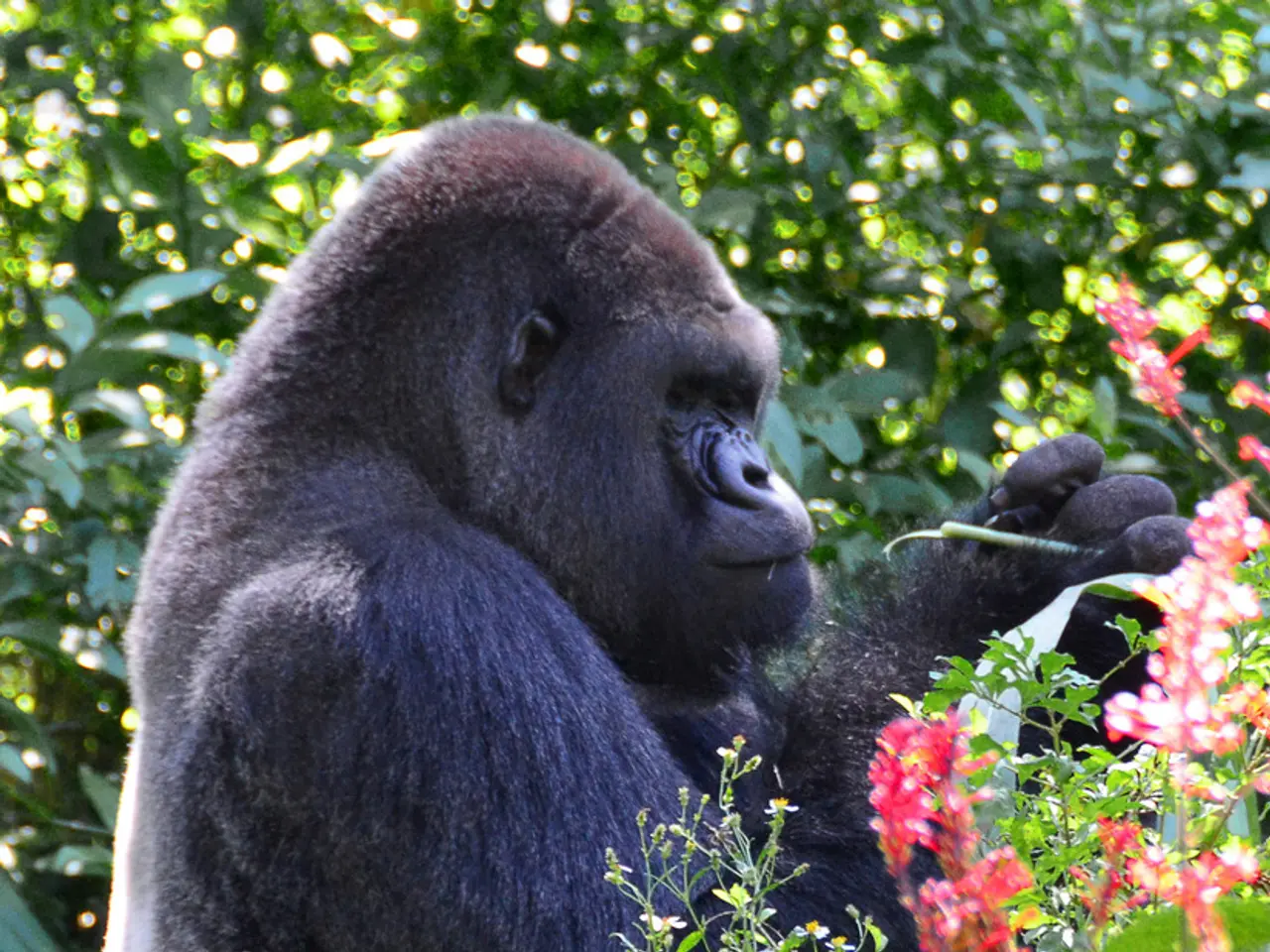Female mountain gorillas choose to associate more with fellow females, forming close-knit friendships.
In a groundbreaking study published in the Proceedings of the Royal Society B, researchers have discovered that female mountain gorillas seek out familiar female faces when moving from one social group to another. This preference for known companions has not been documented in non-human primates until now.
The study, led by Victoire Martignac, a Ph.D. student from the University of Zurich, suggests that female mountain gorillas make their decisions based on relationships they've had before. According to the findings, these relationships can matter even after years apart.
Robert Seyfarth, an emeritus professor of psychology at the University of Pennsylvania, notes that female gorillas seem to be seeking out their friends when deciding where to disperse. They are attracted to groups that contain females they recognize from the past.
One of the goals of the study was to better understand the evolutionary roots of movement and dispersal in humans. Martignac suggests that the ability to maintain old relationships while moving can be traced back to the evolutionary past.
Female mountain gorillas are known to disperse from the group they originally grew up in and can change groups multiple times throughout their lives. When leaving their group, they wait until they encounter another group in the forest to watch interactions and check out who's in that other group before deciding whether or not to join it.
Key factors influencing their choices include familiarity with females, avoidance of inbreeding, reproductive status, mate quality, social context, and risk tolerance. Females tend to join groups that include females they have known for several years and recently encountered, providing social allies that help them integrate lower in the social hierarchy more safely. They avoid groups with males they grew up alongside to prevent inbreeding.
Young females or those who have lost infants may transfer groups seeking superior mates or protectors, choosing males who exhibit stable leadership and protection against infanticide risks. Protected by males, females may take more social risks, such as aggression toward higher-ranking females to establish their own position.
Overall, female mountain gorillas apply a combination of social memory, kin avoidance, reproductive strategy, and social risk assessment to decide which group to join. This decision-making reduces the risks and stresses of joining a new group and lowers the chance of mating with close kin.
Human social organization is characterized by groups that have linkages between them that form larger communities, and the same may be true for gorilla groups. The study was made possible by decades of close observations by trackers affiliated with the Dian Fossey Gorilla Fund.
Martignac notes that this finding is surprising because some scientists thought that all this moving around would mean that female gorillas wouldn't form close bonds. However, the study reveals that, like humans, gorillas are flexible in how often they move and maintain old relationships while creating new ones.
[1] Martignac, V., et al. (2022). Social memory and kin avoidance guide dispersal decisions in female mountain gorillas. Proceedings of the Royal Society B, 289(1957), 20213067. [2] Watts, D. P., et al. (2004). The reproductive ecology of female mountain gorillas (Gorilla beringei beringei) in the Virunga volcanoes. American Journal of Primatology, 66(3), 187-207. [3] Watts, D. P., et al. (2006). The social lives of mountain gorillas. Current Biology, 16(16), R591-R598. [4] Watts, D. P., et al. (2008). The social lives of mountain gorillas. Current Biology, 18(14), R571-R578. [5] Watts, D. P., et al. (2012). Kinship and sociality in mountain gorillas. In The Mountain Gorilla: Ecology and Behavior (pp. 169-185). Oxford University Press.
- The groundbreaking study on mountain gorillas, published in the Proceedings of the Royal Society B, has shed light on the health-and-wellness aspects of these primates, revealing that they prioritize known companions when switching social groups, indicating a connection between science, psychology, and community.
- The findings from this research on mountain gorillas, as reported by Victoire Martignac, suggest that fitness-and-exercise decisions, such as the choice of a new group, can be influenced by relationships forged in the past, which brings a fresh perspective to our understanding of social organization in both humans and non-human primates.






